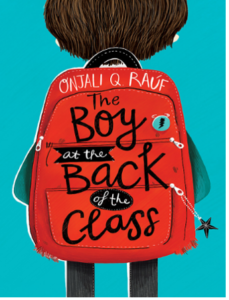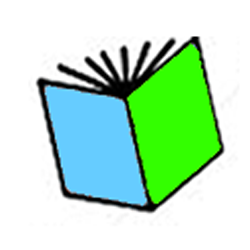Onjali Rauf, ill. Pippa Curnick
Orion Books
Age 8-11

When Ahmed arrives in the classroom everyone is very curious about him and why he is so quiet, doesn’t smile and disappears at break and lunchtime. When a group of his classmates find out that he is a Syrian refugee who has experienced great sadness and been separated from his parents, they are determined to help and invent some incredible plans showing both ingenuity, bravery and determination.
A heartwarming and entertaining story about a serious subject highlighting the range of attitudes people have towards refugees and indicating some of the traumas that can befall them
Watch a video to listen to the author reading extracts from the book:

Talk about the story
What would you tell someone else about this story?
Did anything about it surprise you?
What would you have liked to say to Ahmed, to Brendon or to Alexa (55the narrator) if you met them?
Look at the author’s questions for children at the back of the book and discuss them together.

See our print-off activity book with some of these ideas and other activities
Things to make and do
Introduce the characters
Choose six or more characters from the book. Make a zig zag book. Use one page for each character to introduce them, writing a sentence or two – you could include a picture of them as well.
What does everyone think of Ahmed?
If you have any really long piece of paper, place it on the floor and ask your child to lie on it. Draw around your child to create an outline figure to represent Ahmed. Talk together about how other characters in the story think and feel about Ahmed and write their imaginary comments and questions about him outside the outline. Then talk about Ahmed’s thoughts and feelings and write these inside the outline. If you don’t have a large piece of paper, you could ask them to draw an outline on a piece of A4 or A3 paper and write comments inside and around the outline.
Draw a pomegranate
If you have the opportunity, buy a pomegranate. Give your child a piece of paper and pencils or paints to draw it whole and then cut in half looking closely at the pomegranate seeds. Try tasting them or perhaps sprinkling them over a salad.
Have an interview
Imagine one of you is an interviewer and another one of the main characters in the story, eg Alexa, Ahmed or maybe Brendon the bully. Have a conversation about what happened, what they did and why. You could use a cardboard tube as an imaginary microphone.
Film a news broadcast
Your child could imagine they are a TV news reader telling the story of Ahmed and the children’s quest to help him find his parents. If possible, set the room up with a small table and chair. Talk first about what to include when you tell Ahmed’s story and have a practice or make notes. You could video your child and then watch the recording together.
Pack a rucksack
Talk with your child about what you would take if you had to leave your home suddenly because you were in danger, for example because of war. (This would need to be whatever you could carry in a small bag such as a rucksack). Try to collect some of these things together – what would it be hard to leave behind?
Write a list
Make a list of five things you could do to make refugees feel welcome in your class or neighbourhood. For example, learning to say hello or welcome in their language.
Find out more
Find out more about refugees
Read the information at the back of the book and find out more about refugees.
Resources refugee week Children & young people | Refugee Week
Read about Ukrainain refugees on the CBBC website. Ukraine refugees: What’s being done to help? – CBBC Newsround
Read more books by author, Onjali Rauf:
The Star Outside My Window
The Day We Met the Queen
The Night Bus Hero
The Great (Food) Bank Heist
The Lion Above the Door
Read more stories about refugees:
Picturebooks include:
The Journey Francesca Sanna
Wisp Zana Fraillon, illus. Grahame Baker Smith
Novels include:
Welcome to Nowhere by Elizabeth Laird
No Ballet Shoes in Syria by Catherine Bruton

 Follow lovemybooksUK15
Follow lovemybooksUK15